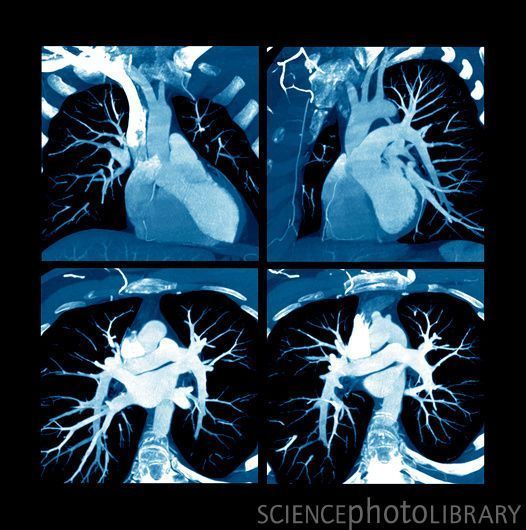Amid all the furor over the health care reform hearings, the links between statins and diabetes, and the soaring autism rates, the news that CT scans and cardiac catheterization procedures appear to increase the risk of thyroid dysfunction got scant media attention. But that doesn’t mean it should be ignored.
“Iodinated contrast media exposure is associated with subsequent development of incident hyperthyroidism and incident overt hypothyroidism,”says Connie M. Rhee, M.D., from Harvard Medical School in Boston. She and her colleagues conducted a case-control study of patients treated over 20 years who did not have preexisting thyroid conditions.
 Exposure to iodinated contrast media during imaging procedures like CT scans and cardiac catheterization clearly affects thyroid function, she reported recently in the Archives of Internal Medicine.
Exposure to iodinated contrast media during imaging procedures like CT scans and cardiac catheterization clearly affects thyroid function, she reported recently in the Archives of Internal Medicine.
In the largest study of this issue to date, the Harvard team assessed contrast media exposure by studying claims data for contrast-enhanced computed tomography or cardiac catheterization. They defined incident hyperthyroid or hypothyroid cases as a change in thyrotropin level from normal (at baseline) to low or high (follow-up measurement).
A control group was selected using incidence density sampling, and was matched to cases on the basis of age, sex, race/ethnicity, estimated glomerular filtration rate, follow-up thyrotropin measurement date, and interval between baseline and the follow-up thyrotropin measurement date.
The researchers found 178 and 213 incident hyperthyroid and hypothyroid cases, respectively, who were matched to 655 and 779 euthyroid controls. ICM exposure was significantly associated with incident hyperthyroidism (odds ratio 1.98) but not with incident hypothyroidism (OR 1.58). In secondary analysis, iodinated contrast media exposure was associated with incident overt hyperthyroidism (follow-up thyrotropin level ≤0.1 mIU/L; OR 2.50) and with incident overt hypothyroidism (follow-up thyrotropin level >10 mIU/L; OR 3.05).
Despite the frequent use of CT and cardiac catheterization in modern practice, the know effects of iodine on the thyroid, and the very high doses of iodine in contrast media–a typical dose contains roughly 13,500µg of free iodide and 15 g to 60 g of bound iodine, which combined are several hundred thousand times above the recommended daily intake of 150 µg–the impact of these imaging procedures on thyroid function has received very little research attention.
Contrast use has soared in the past twodecades along with dramatic increases in cardiac catheterization and CT use, Rhee and colleagues wrote. Although some complications related to contrast use, such as contrast-induced nephropathy (CIN), have beenstudied extensively, there has been little study of contrast’s effects on thyroid function, even though the risks associated with thyroiddysfunction are well known.
Clinicians need to be aware of this, the authors stress. They need to be more judicious in ordering these tests and they need to ask about exposure to iodinated contrast media when a patient presents with symptoms suggestive of a thyroid problem. “Sudden exposure to high iodide loads, given in other contexts, can disrupt thyroid hormone regulation, resulting in hypothyroidism (Wolff-Chaikoff effect) or hyperthyroidism,” the authors write.
Thyroid dysfunction can show up as tachyarrhythmias, hypertensive crises, neuropsychiatric disturbances, and reproductive abnormalities. Both hyper- and hypothyroidism can increase the risk for coronary heart disease, left-ventricular myopathy, electrophysiological abnormalities, and cardiovascular and all-cause mortality, said Dr. Rhee.
Sharpen your diagnostic eye for thyroid dysfunction; read, The Clinical Picture of Hypothyroidism.
END







